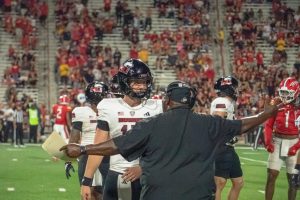Midwest Museum of Natural History opens in Sycamore
April 13, 2005
Staring at the black bear and cave bear skulls on display, 3-year-old Tate Regnery, a museum member, tugged his dad’s hand to enter the museum.
“It’s cool in here – it’s really big,” Tate said, placing his hands against the glass in an attempt to get closer to the bear skulls.
The Midwest Museum of Natural History, 425 W. State St. in Sycamore, had its grand opening April 2 and 3 and its soft opening Feb. 7, Executive Director Chris Brodnicki said.
The museum has seen a total of 2,200 guests from 75 different zip codes so far and sold 85 memberships, Brodnicki said.
“We wanted to not only be a quality education source but also an economic engine,” he said.
He said he hopes museum guests will use the local restaurants, shops and hotels.
The preserved animals displayed were donated by Sycamore veterinarian Russell Schelkopf from his private collection. Schelkopf now works in genetic engineering and hog farming, Brodnicki said.
All the displays represent African- and North- American habitats. Included is an Ice Age section featuring an African elephant jaw and other bones on loan from the Field Museum in Chicago, staff member Julie Custer said.
Other businesses and private donors have donated money and supplies to the museum, Brodnicki said.
The preserved animals are not only displayed standing. Some are displayed mid-attack.
In an African-savanna section, a lion is displayed attacking a sable from behind, biting at its neck.
“We offer a lot of neat things for people of all ages,” Brodnicki said.
On the second floor, visitors can step on the “Your Weight in Animals” scale.
“When people find out what they weigh the same as, they usually go to find it and see if they are indeed the same,” Brodnicki said.
In the museum’s basement is a “Nature Exploratorium” for children to do some hands-on activities.
“It’s for kids to explore and parents to relax,” Brodnicki said.
Puzzles, arts and crafts, fossils and a box of rubber animal excrement are among the entertainment options for children.
One of the more popular attractions the museum provides is the “Field Station,” which includes live specimens, he said.
The station features a leopard gecko, emperor scorpions, a Chilean rose-haired tarantula, giant African millipede and a Madagascar hissing cockroach. A praying mantis egg case is coming soon to the station.
NIU’s computer science department is currently helping the museum to develop the touchscreen displays that will accompany the preserved animals.
For more information, call 815-895-9777 or visit www.mmnh.org.






